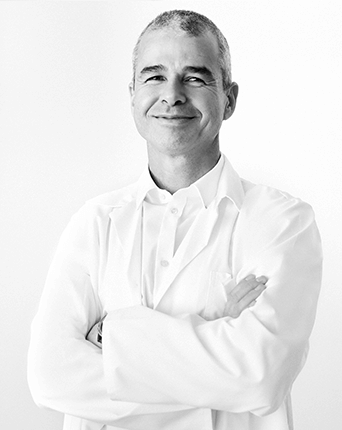
The 5 Support Stages of Brain Recovery After a Stroke


The brain is a powerful yet delicate organ that carries out numerous functions—functions we often take for granted.
Having a stroke can cause debilitating injuries to the brain, yet the aftermath can be even more challenging to your health and lifestyle. Up to 50% of stroke survivors suffer some form of motor dysfunction or brain impairment—including memory loss, difficulty focusing and processing information, and an inability to reason.
No one wants to have their most significant capabilities suddenly stripped away. That’s why we’re here.
If you do not feel the same as you did before your stroke, the Aviv team has answers. The time to commit to your health is now. Learn the five stages of brain recovery after a stroke and the treatment options available to you.
What Happens to the Brain During a Stroke?
Blood carries oxygen and essential nutrients that nourish brain cells. But during a stroke, blood cannot reach crucial parts of the brain. The main types of strokes:
- Ischemic stroke: Blood clots, fatty deposits (plaque), or other particles block the blood vessels to part of the brain.
- Hemorrhagic stroke: Weakened artery in the brain leaks blood or ruptures, putting too much pressure on brain cells and damaging them.
- Transient ischemic attack (TIA): Not a true stroke (often called a mini stroke, silent stroke, or warning stroke).
Ischemic strokes make up 87% of all strokes (including TIAs), with hemorrhagic comprising the other 13%.
In either case, sections of the brain become damaged, which can manifest cognitive, physical, and even emotional symptoms.
How the Brain Recovers from a Stroke: The 5 Stages of Support
Research illustrates the brain can reorganize and adapt in response to injury. That means there’s hope for stroke survivors because the brain can be retrained.
Now, post-stroke recovery is not as cut and dry as one would hope. Because every person has different stroke symptoms, lifestyles, and health backgrounds, it’s important to find a post-stroke recovery plan created solely for you.
Here are the five stages of post-stroke recovery. Each stage represents a milestone that gets you closer to living a better, more fulfilling life. The right treatment plan will include one or a combination of these post-stroke rehab therapies.
1. Thinking, Memory, and Perception
Neuropsychologists look at the link between someone’s brain and their potential to participate in daily activities. Neuropsychologists typically conduct an assessment to measure areas such as memory, learning, and processing speed.
The doctors can identify which areas of the brain have been most affected and will provide a rehabilitation plan based on the data.
2. Communication and Language
Social interactions lie at the core of human life. So when this is taken away through aphasia (a disorder that impacts a person’s ability to understand or express speech), communicating with friends and family becomes extremely difficult and frustrating.
Stroke patients with aphasia are often referred to speech-language pathologists (SLPs). SLPs help individuals relearn speech and communication techniques, such as controlling mouth and throat muscles and engaging in cognitive language exercises.
Early speech intervention often leads to improved communication skills at the 12- and 26-week marks.
3. Exercise and Mobility
Exercise and mobility may entail working with a physical therapist—someone who helps you move more easily and ease some of the pain. This recovery program includes movement exercises along with balance and breathing techniques. All of this helps patients reacquire motor skills and get back to their normal routines.
Studies show consistent physical therapy decreases the risk of hospital readmission in post-stroke patients.
4. Healthy Diet
Diet plays a vital role in how we think, feel, and move. Dietitians can be beneficial to post-stroke patients. Here’s why:
- Upon a stroke, some stroke patients experience feeding and swallowing problems. They may also experience loss of appetite. These conditions can impact patients’ weight and nutritional intake.
- Dieticians can make specific recommendations based on your needs to improve your health and minimize the risk of having another stroke.
5. Hyperbaric Oxygen Therapy (HBOT)
Several studies have clearly shown the benefits of using oxygen fluctuations in post-stroke recovery. Aviv’s HBOT therapy process has patients sit in a pressurized environment, breathing in 100% oxygen. Our experts adjust oxygen fluctuations that trigger the self-regenerative mechanism of the body for impressive results.
Not only does HBOT elevate oxygen in the body, but our program promotes neuronal brain cell rehabilitation that can result in:
- Regained speech
- Recovered ability to read and/or write
- Restored motor function
- Return to independence in performing daily activities
Case Study: Keren Trabelsi
The key to successful stroke recovery is through a holistic treatment plan that nourishes your mind and body along an effective and long-lasting recovery roadmap.
The good news? You can find this at the Aviv Medical Program. Our post-stroke recovery treatment program can combine cognitive, physical, dietary, and HBOT training.
Former patient Keren Trabelsi suffered an ischemic stroke, which caused paralysis on the left side of her body. Furthermore, lingering cognitive issues made daily tasks difficult and crushed her well-being.
Luckily, Keren found the Aviv Medical Program and underwent a comprehensive treatment plan. Thirteen months later, she can walk comfortably, feel sensation in her left hand, and engage in cognitive activities (i.e. crossword puzzles, Sudoku, etc.).
“[The Aviv Medical Program is] like driving a Ferrari on the road to recovery versus driving like an old beaten-up car…”
Learn more about her post-stroke recovery below.
What You Need to Know About Post-Stroke Recovery
There are a few things to keep in mind to ensure the most successful post-stroke recovery journey:
- Several factors influence recovery. These are different for everyone and include:
- Where in the brain the stroke occurred
- How much of the brain was impacted
- The survivor’s will and motivation to improve
- Level of caregiver support
- The quality of a rehabilitation program
- “Carefully directed, well-focused, repetitive practice” retrains the brain and is essential to any neurorehabilitation program. It’s the same concept as if you were to learn a new skill like playing a musical instrument.
- Patients and healthcare professionals should be especially vigilant in preventing another stroke from occurring. This requires beginning treatment right away. It also entails monitoring the following conditions as they can put you at higher risk for another stroke:
- High blood pressure
- Heart disease
- High cholesterol
- Diabetes
- Measuring progress matters. Working with a medical staff that captures and tracks data is critical to your success. This allows doctors to adjust treatment as necessary to get the best results possible.
For example, the Aviv Medical Program leverages analytics to produce a report of your health and progress. This may include brain stroke images and MRIs. The data gathered from these analytical tools enable our team to make the right adjustments and give you precisely what you need to elevate your quality of life.
2 Main Signs of Post-Stroke Recovery
Listed below are two signs of post-stroke recovery. If you find that your journey is a little different, don’t stress about it. Everyone’s circumstances are different; thus, timelines and progress will vary.
- There is progress within three months and beyond. Though everyone recovers from a stroke at a different pace, the first three months are generally when patients see and feel the most improvement.
- Independence is improving. After a stroke, you may become more dependent on others to fulfill daily-living tasks such as getting dressed, bathing, or eating. With the right post-stroke recovery plan, you’ll begin to rely less on others and start performing those tasks independently again.
New Stroke Treatment Works Miracles at the Aviv Clinic
It’s time to return to optimal health. If you or your loved one has undergone a stroke (either recently or years ago) and is looking for scientifically advanced stroke recovery therapy, contact Aviv Clinics. We’ll put you in touch with our medical team who provides comprehensive assessments of every stroke patient.
Our team takes pride in helping a diverse array of patients. Rest assured, we will work with you one-on-one to craft an individualized plan. Learn more about our Aviv Clinics brought to you by DP World.
Aviv Medical Program provides you with a unique opportunity to invest in your health while you age


